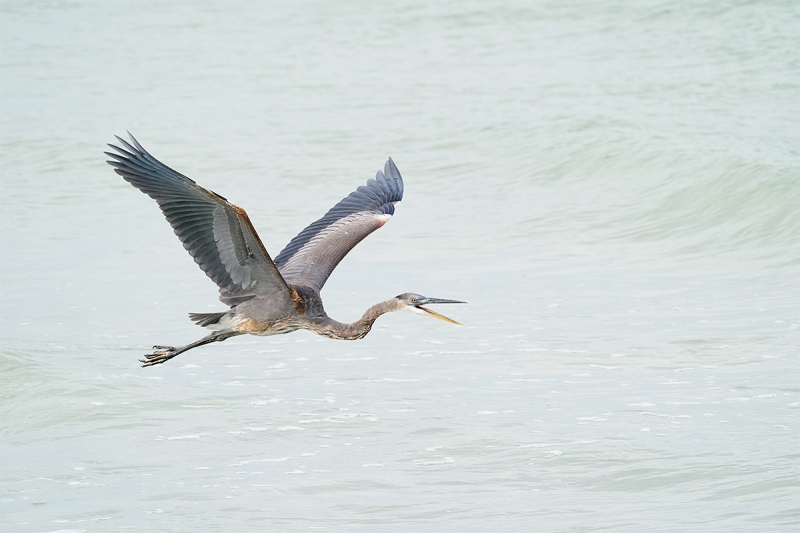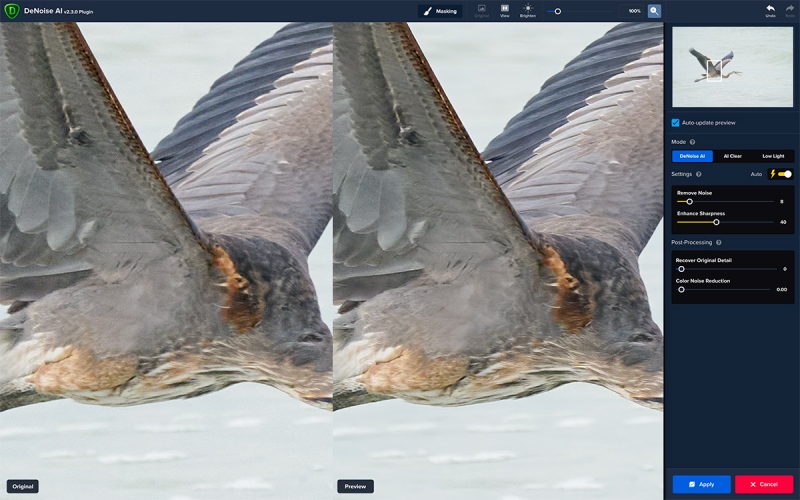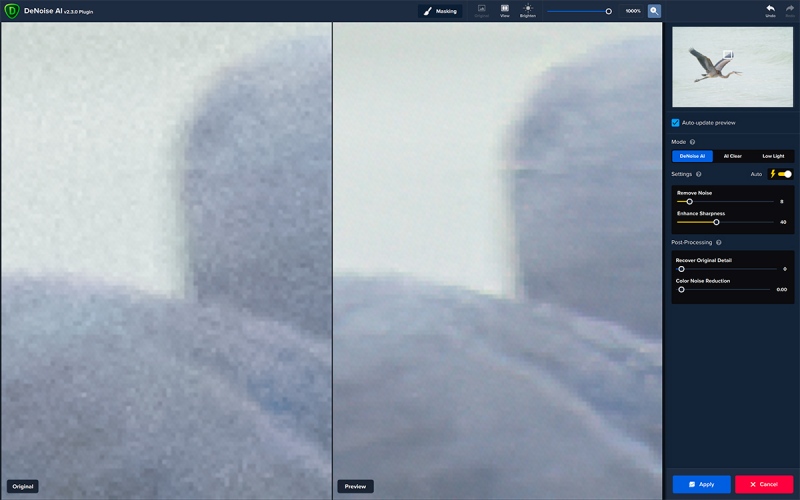What’s Up?
On Saturday morning Anita and I explored Outback Key to the very end on a super-low tide. With the dreary conditions, we concentrated on creating pleasing blurs of the tern, shorebird, and gull flocks blasting off. We had plenty of those. Late on what was a cloudy morning I sat on the beach and butt-wiggled close enough to isolate single Red Knots with the 200-600/1.4X TC, and the a9 ii. The versatility of the 2-6 continues to amaze me.
On Saturday evening we had a wonderful dinner in our Gulfport AirBNB apartment with our super-hosts, Warren and Dawn. Anita did a great job with the grilled jumbo shrimp and portobello mushrooms with a brown sugar/soy sauce/balsamic vinegar glaze. Warren and Dawn brought a box of chocolate-coated macadamia nuts for dessert. There were twelve of them. Anita had two, Dawn had one, and Warren did not eat any. Someone emptied the box but I am not saying who ..
On Sunday morning, the overnight rain continued. We packed up and were in the car by 7:00am heading back to ILE. In the rain.
|
|
|
This image was created on 2 OCT 2020 at Fort DeSoto Park. I used the handheld Sony FE 200-600mm f/5.6-6.3 G OSS lens (at 353mm), the Sony FE 1.4x Teleconverter, and the blazingly fast AF king, the Sony Alpha a9 II Mirrorless Digital Camera. ISO 5000. Exposure determined by Zebras with ISO on the rear wheel: 1/2000 sec. at f/10 in Manual mode. AWB at 9:05am on cloudy morning. Tracking Flexible Spot (M) Continuous AF was active at the moment of exposure and performed perfectly. Be sure to click on the image to see a larger version. Great Blue Heron squawking in flight |
More Good Stuff on the SONY 200-600 G Lens
The 2-6 does just fine with birds in flight with the 1.4X TC as long as long as you can deal with working at the relatively dark (i.e., slow) wide open aperture of f/9. That means on dreary days you will often be working with ISOs in the 5000 to 1000 range. Or higher. The good news is that with RawDigger you can learn to create practically noise free image files from the get-go and clean up that noise easily with Topaz DeNoise AI.
For hobbyists who cannot afford a SONY 600mm f/4 OSS GM lens (yours for only $12,999.98) the 2-6 might be the best value ever in a telephoto zoom lens. Be warned that for birds in flight you will want an a9 or an a9 ii while staying away especially from the a7r iv. The 61-MP monster just does not do well with birds in flight with the 200-600 but does much better with the 600 GM. I have no clue as to why.
Why the TC?
Many might ask why I had the TC on and then zoomed out to 353mm. It is proper to add a TC when you need more reach. I had done that in part just to see how the 2-6 would do with the TC in low light. I had done some bathing Sandwich Terns and incoming skimmers. When I saw the GBH hunting in the surf, I walked ahead of the bird to get the wind behind me. For most bird photography, keeping the wind at your back is a good plan, especially when light angle is not a concern. I had gotten close to the heron and done some tight head and neck pattern stuff and then headed west on the beach when I heard a loud squawk. I had already set the lens for tern flight so when I saw the heron flying left to right I simply spun the rear dial three clicks clockwise to increase the ISO from 2500 to 5000 as the heron is much darker than any tern. The exposure was confirmed as perfect by RawDigger.
Tracking Flexible Spot (M) for Flight?
Recently I have begun experimenting with Tracking Flexible Spot (M) for flight rather than my preferred Center Zone. SONY e-Guide co-author Patrick Sparkman loves Wide for flight. For flight photography, both Zone and Wide require a bit less skill and hand-eye coordination than Tracking Flexible Spot (M). With the latter, you must keep the tracking spot on pr very close to the bird’s head or neck. When the heron squawked, I went with Tracking Flexible Spot (M) as that was what I had set: I did not have any time to change the AF mode.
|
|
|
Be sure to click on the image to see a larger version. Side by side 100% DeNoise comparison |
The Side by Side 100% DeNoise Comparison
The important thing to note here is how little noise there is in the original image. — the one on the left. After clicking on the image to enlarge it, notice that in Auto “Remove Noise” was set to the very low value of 8. AI stands for Artificial intelligence (indeed!). So why did my ISO 5000 image show so little noise? Because I have improved my exposure skills by working with and studying RawDigger. Less noise is one of the many benefits of learning to m-ETTR, mega-expose to the right.
Do not expect a ton of fine feather detail in an ISO 5000 image created in low light. That said, the optimized image above looks quite lovely.
|
|
|
Be sure to click on the image to see a larger version. Side by side 400% DeNoise comparison |
The Side-by-Side 400% DeNoise Comparison
Above is a 400% view of the trailing edge of the far wing (as shown in the Navigator window in the upper right corner of the DeNoise screen capture). As expected, there will always be some noise in an ISO 5000 image when viewed at 400%. As expected, DeNoise AI cleaned that up beautifully even with the very low setting.
Typos
In all blog posts and Bulletins, feel free to e-mail or to leave a comment regarding any typos or errors. Just be right :).

















I do have the Topaz DeNoise Al. Not sure, when it should be applied when opening a RAW file. I have always used ISO 100 for my landscape and cityscape photography, so this wildlife photography is a new adventure. Also, what about Gigapixel Al, is it worth spending the money on that one also?
Hi Anders,
We’ve covered that often here recently 🙂 It is best to subscribe to the blog. IAC, it is best to crop away an unwanted pixels and then run DeNoise.
I can never tell what’s worth it to someone else but I do know that Gigapixel is amazing when you have big crops and/or relatively small image files and need to up-rez them.
with love, artie
ps: if you get GP please use my discount code to save some money 🙂
I can’t help but remember with amusement the way in which my comments about ETTR, the inaccuracy of the camera histogram and the value of Rawdigger/FastRawViewer, were totally dismissed last year. I was called a dickhead. Time and learning has a way of changing entrenched views but only to an open mind. Good on you Artie, you got there in the end.
Thanks, Richie. I figured that I would hear from you at some point. As it turns out, we both were right 🙂
with love, a
Were we? I don’t recall. Remind me.
You are a smart guy so I am sure you can figure it out 🙂
with love, a
Awesome post and the thing I miss the most since moving back to Canon is the Sony 200-600.
I love mine.
People call me crazy but having an internal zoom with a f/6.3 and one which balances well, can be easily carried and is easily hand held is a winner in my book. Plus one can’t underestimate the power of the internal zoom for tripod work.
It is a big plus all around.
The Canon EF 100-400 IS II f4.5-5.6 +- 1.4x TC is a nice lens but it bayonets and don’t even get me started on the crazy RF 100-500 f5.6-7.1 which when attached to a TC has a range of 300-500 + the TC multiplier.
I am confused as to what you are saying about the 100-500 … Please explain.
Incidentally, had an amazing time yesterday at the “secret” Midwest Bosque where the Sandhill Cranes flock by the thousands before they start the migration south in early-mid November. While it’s not too challenging nailing the large slow moving Sandies in flight, the R5 performed flawlessly.
With what lens? Care to share the location?
BTW, I think you enjoyed the “dessert” more than the “desert”, though I need to spend some more time in the later especially as the cold months descend on the Midwest. Also, I believe you wanted to “do not” rather than “do note” about feather detail.
Brain typo 🙂
with love, a
Yes, the 100-500 won’t retract less than 300 mm with the 1.4x RF TC in place thus becoming in effect a 420 to 700 mm lens. It’s a poor design and much less useful than a 100-400 is ii EF which with a 1.4x tc becomes a140-560mm lens. I was using the 500 f/4 is Ii +1.4x iii tc last evening and will email you with the information separately.
Have your plans changed to drive across country?
Things are complicated but right now we are planning on leaving about 22 OCT 🙂
with love, a
Hi Artie.
Thanks to your excellent experimentation, explanations, and examples, I’m totally sold on getting the Topaz products. Have heard of them for years, but didn’t know they had improved so very much. Will of course use your links to get them.
-Bob
Thanks a stack Bob. And much love, a